Below is a video overview of self service machine, watch it carefully to learn more!
By watching the video above, you can see that our self service machine is beautifully designed and has various styles to meet your different application scenarios. At the same time, our self service machine has stable and efficient working performance, flexible and fast response, and convenient and smooth operation. It is the first choice for investment. Contact us today to place an order and enjoy the latest price optimization.
| Type | Size (Inches) | Design Features | Price Range (USD) |
|---|---|---|---|
| Self-Checkout Kiosk | 15" - 22" | Touchscreen interface, barcode scanner, payment module | $4,000 - $7,000 |
| Bill Payment Machine | 15" - 32" | Cash and card payment options, receipt printer | $3,000 - $6,000 |
| Information Kiosk | 22" - 32" | Interactive touchscreen, custom branding, multi-language support | $5,000 - $8,500 |
| Ticketing Kiosk | 15" - 32" | High-speed printing, ticket scanning, customizable software | $4,500 - $7,500 |
| Check-In Kiosk | 22" - 32" | Integrated ID verification, touchscreen, secure data handling | $5,500 - $9,000 |
| Ordering Kiosk | 22" - 32" | Customizable menu display, order confirmation, payment integration | $6,000 - $10,000 |
Design and Planning: Initial design is created based on user requirements and industry standards. This includes the layout of the touchscreen, payment modules, and other features.
Component Selection: Select and procure components such as touchscreens, card readers, cash acceptors, printers, and enclosures. These are chosen based on performance, compatibility, and durability.
Prototyping: Develop a prototype to test the design, functionality, and user interface. This helps identify potential issues and refine the design before mass production.
Hardware Assembly: Assemble the machine’s hardware, including the mounting of internal components like the touchscreen, payment systems, and connectivity modules into the enclosure.
Software Development: Develop and install the software that runs the machine. This includes the user interface, transaction processing, and integration with backend systems.
Testing and Quality Assurance: Conduct thorough testing of the assembled machine to ensure all components function correctly and the software operates as intended. This includes stress testing and usability testing.
Deployment and Installation: Once tested, the machines are packaged and shipped to the end-users. Installation includes setting up the machine at its location, configuring software settings, and conducting final tests to ensure proper operation.
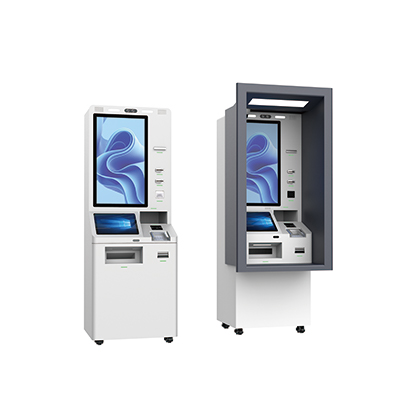
User Interaction: The user interacts with the machine via a touchscreen or other input methods to select the desired service or transaction. This can include tasks like placing an order, making a payment, or accessing information.
Data Input: Users input data through the interface, such as entering payment details, selecting items from a menu, or scanning barcodes. The machine processes this information to proceed with the transaction.
Verification and Processing: The machine verifies the entered data. For payment transactions, it communicates with payment processors to authorize and complete payments. For information services, it retrieves and displays relevant data.
Transaction Handling: For payment-related tasks, the machine handles cash, card payments, or digital payments. It ensures secure processing and generates receipts or confirmations as needed.
User Feedback: The machine provides feedback to the user, such as confirming the completion of a transaction, displaying a summary of selected items, or providing printed receipts.
Data Management: All user interactions and transactions are recorded and stored in the machine’s system. This data can be used for reporting, analysis, and ensuring accurate operation.
Maintenance and Support: The machine periodically undergoes maintenance to ensure it continues to function correctly. Support may involve troubleshooting issues, updating software, and replacing components as necessary.

Self-service machines are widely used across various sectors for their efficiency and convenience. Common applications include self-checkout kiosks in retail stores, bill payment machines, ticketing kiosks, and information terminals in public spaces. They allow customers to perform tasks such as making purchases, paying bills, checking in for flights, and accessing information independently.
Benefits include reduced wait times and labor costs, as they automate routine tasks that would otherwise require staff. They enhance customer satisfaction by providing a faster, more convenient service experience. Additionally, self-service machines minimize human error, improve transaction accuracy, and can be operational 24/7. They also provide valuable data for businesses to analyze customer behavior and preferences, leading to better service offerings and targeted promotions. Overall, they streamline operations, improve efficiency, and offer a scalable solution for handling high volumes of transactions.
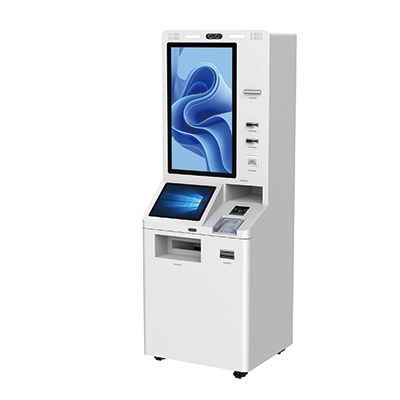
Here are six customization options for self service machine
User Interface Design: Customize the touchscreen interface with your branding, colors, and logo. Tailor the layout and navigation to suit specific user needs and enhance the overall user experience.
Payment Methods: Integrate various payment options, including cash, credit/debit cards, mobile payments, and contactless transactions. This flexibility accommodates different customer preferences and ensures seamless transactions.
Hardware Features: Select hardware components such as printers, scanners, or RFID readers based on your needs. Customize the machine's physical design, including the size, shape, and materials, to match your environment and usage requirements.
Software Functions: Develop and install custom software applications to support specific functions, such as loyalty programs, promotions, or multilingual support. This can enhance the machine’s utility and align it with your business processes.
Accessibility Features: Include accessibility options like adjustable height, braille labels, or voice guidance to ensure the machine is usable by people with disabilities. This helps in meeting legal requirements and providing an inclusive service.
Integration with Backend Systems: Customize the machine to integrate with your existing backend systems, such as inventory management or CRM. This ensures seamless data flow and synchronization between the kiosk and your business operations.
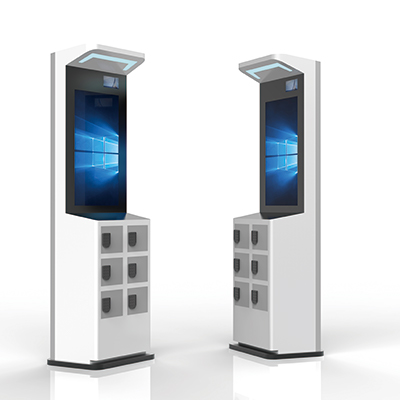
The cost of a self-service machine varies based on its type, features, and customization options, typically ranging from $3,000 to $10,000. Initial costs include hardware, software development, installation, and training. Additional costs may involve maintenance, updates, and ongoing support.
Return on Investment (ROI) is achieved through several factors. Self-service machines reduce labor costs by automating tasks such as transactions and customer service, allowing staff to focus on higher-value activities. They also minimize human error and enhance operational efficiency, leading to faster service and increased customer satisfaction. Additionally, they can boost revenue through upselling opportunities and provide valuable data for targeted marketing and improved decision-making. By improving service speed and accuracy, businesses often see increased transaction volumes and customer retention, resulting in a positive ROI over time. The combination of cost savings and increased revenue potential makes investing in self-service machines a financially sound decision for many businesses.

| Component | Description | Specifications |
|---|---|---|
| Touchscreen Display | Interactive screen for user input and navigation | Sizes: 15" - 32", Resolution: HD - 4K |
| Payment Module | Hardware for processing payments (card, cash, mobile) | Types: Card readers, cash acceptors, NFC |
| Printer | Device for printing receipts or tickets | Types: Thermal printer, inkjet, impact |
| Scanner | For barcode or QR code scanning | Types: Laser scanner, CCD scanner |
| Enclosure | Protective casing for internal components | Materials: Metal, plastic, weather-resistant |
| Computer Unit | The central processing unit of the machine | CPU: Intel i5 or better, RAM: 4GB - 8GB |
| Connectivity Modules | For network and communication | Types: Ethernet, Wi-Fi, Bluetooth |
| Software System | User interface and backend processing | Customizable, supports various applications |
| Security Features | Measures to prevent tampering and theft | Locks, tamper-evident seals, security cameras |
Here’s a step-by-step guide on how to buy a self-service machine:
Define Requirements: Identify your needs based on the type of service you want to offer (e.g., payment, ticketing, information). Determine the features and specifications required, such as screen size, payment options, and software capabilities.
Research Suppliers: Look for reputable manufacturers or suppliers who specialize in self-service machines. Evaluate their product range, customer reviews, and industry reputation. Check if they offer customization options.
Request Quotes: Contact multiple suppliers to request quotes based on your specifications. Compare prices, customization options, and included services such as installation and training.
Review Proposals: Examine the proposals and product details from different suppliers. Assess the quality of components, software capabilities, and support services. Consider the total cost of ownership, including maintenance and potential upgrades.
Check References: Ask for references from previous clients to get feedback on the supplier’s performance, reliability, and after-sales service. This helps ensure you choose a trustworthy supplier.
Finalize Purchase Agreement: Once you’ve selected a supplier, review and finalize the purchase agreement. Ensure it includes all terms and conditions, delivery timelines, warranty information, and support services.
Order and Installation: Place your order and coordinate with the supplier for delivery and installation. Ensure the machine is set up correctly and tested for functionality. Provide training for staff if required.
Post-Purchase Support: After installation, monitor the machine’s performance and ensure you receive adequate support. Address any issues promptly and maintain regular maintenance as per the supplier’s recommendations.
When purchasing a self-service machine, consider the following factors to ensure you make an informed decision:
Purpose and Functionality: Determine the primary function of the machine (e.g., payment processing, ticketing, information display). Ensure the machine’s features align with your specific needs and operational goals.
Customization Options: Assess the extent to which the machine can be customized to fit your brand and requirements. This includes the user interface, hardware components, and additional features.
Cost and Budget: Evaluate the total cost of ownership, including the initial purchase price, installation, and ongoing maintenance. Ensure it fits within your budget and provides value for money.
Quality and Reliability: Consider the build quality and reliability of the machine. Choose reputable manufacturers known for durable, high-quality products and check for warranties and service guarantees.
Software and Integration: Ensure the machine’s software meets your needs and integrates with your existing systems (e.g., payment processors, inventory management). Verify compatibility with your technology stack.
User Experience: Assess the user interface and ease of use. A well-designed machine should provide a smooth, intuitive experience for your customers to minimize training and operational issues.
Maintenance and Support: Review the support and maintenance services offered by the supplier. Ensure there is a clear plan for handling repairs, software updates, and customer service.
Compliance and Security: Verify that the machine complies with industry standards and regulations, especially regarding data protection and payment security. Look for features like encryption and secure payment processing.
Scalability and Future-Proofing: Consider whether the machine can be upgraded or scaled to accommodate future needs. Assess the supplier’s ability to provide ongoing support and upgrades.
Installation and Training: Check if the supplier offers installation and training services. Proper setup and staff training are crucial for effective machine operation and minimizing downtime.






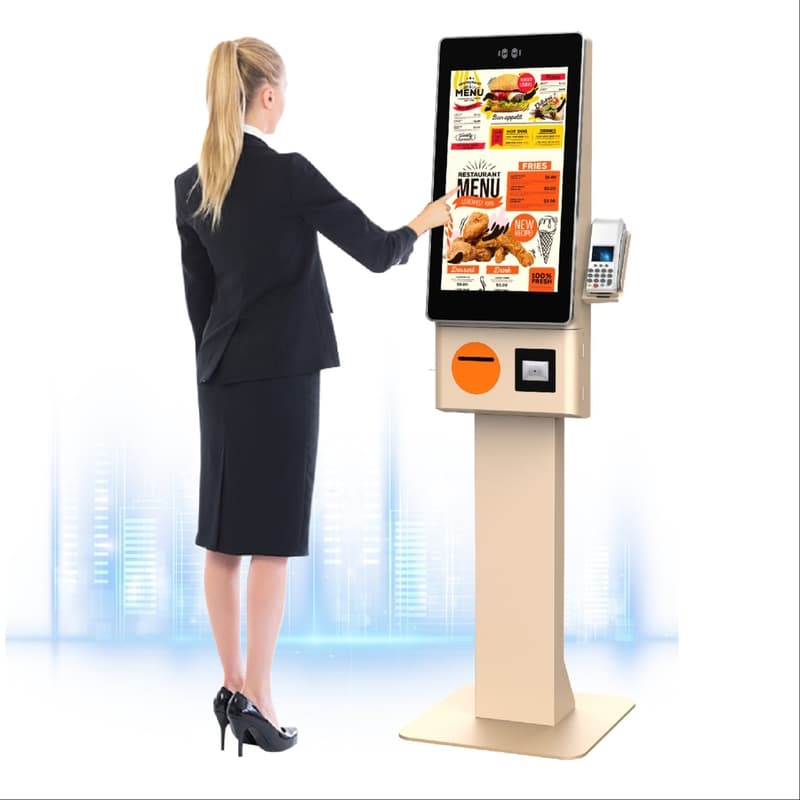
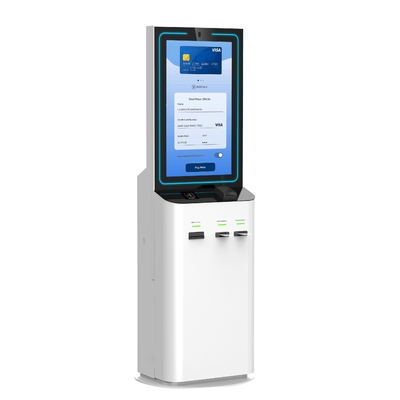
What did our happy clients say?
The self-service machine we purchased exceeded our expectations in both quality and performance. It's robust, reliable, and the interface is user-friendly. The customer support from Lean Kiosk Systems has been exceptional, promptly addressing any issues. Highly recommended!
We are thrilled with our new self-service machine from Lean Kiosk Systems. It’s durable and easy to operate, fitting perfectly into our operations. Their after-sales service has been top-notch, ensuring smooth maintenance. A great investment for any business!
Lean Kiosk Systems delivered an outstanding self-service machine that has transformed our customer service. The build quality is excellent, and the technical support has been incredibly responsive. We highly recommend their products and services.
Our self-service machine from Lean Kiosk Systems has been a game-changer. It’s built to last, performs flawlessly, and the after-sales support is outstanding. We’re very satisfied with the purchase and strongly recommend Lean Kiosk Systems for their excellent service and products.